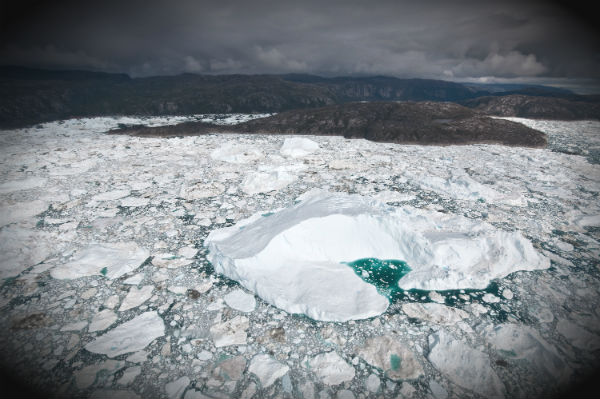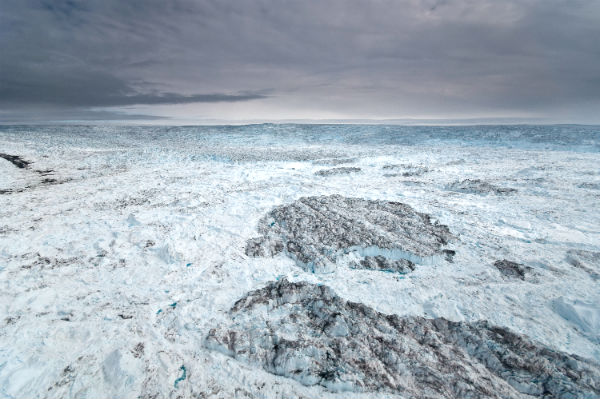Greenland’s glacier meltdown gives new insight for rising sea level

Greenland’s contribution to rising sea level in the 21st century might be significantly less than the upper limits some scientists thought possible, a new study shows. Data shows a 30% speed-up in 10 years on average. With faster movements of the glaciers, ice and meltwater are faster released into the ocean.
In a previous study, a scenario suggested the Greenland glaciers would double their velocity between 2000 and 2010 and then stabilize at the higher speed. And there was another study that suggested the speeds would increase tenfold and then stabilize.
Scientists recorded changes in Greenland outlet glaciers by producing velocity maps using data from the Canadian Space Agency’s Radarsat-1 satellite, Germany’s TerraSar-X satellite and Japan’s Advanced Land Observation Satellite in period of ten years. Scientists found that the outlet glaciers had not increased in velocity as much as had been speculated. The scientists saw no clear indication in the new research that the glaciers will stop gaining speed during the rest of the century according to study.

The record showed a complex pattern of behavior. Nearly all of Greenland’s largest glaciers that end on land move at top speeds of 9 mph to 99 mph (30 to 325 feet) a year, and their changes in speed are small because they are already moving slowly. Glaciers that terminate in fjord ice shelves move at 305 mph (1,000 feet to a mile) a year, but didn’t gain speed appreciably during the decade. Glaciers that end in the ocean can travel up to 11 kmph (seven miles or more) in a year in the east, southeast and northwest areas. Their changes in speed varied (some even slowed), but on average the speeds increased by 28 % in the northwest and 32 % in the southeast during the decade.
However, scientists stated that 10-year time series is too short to really understand long-term behavior. There still may be possibilities of events that could cause large increases in glacier speed to continue. Also, some of the big glaciers in the north of Greenland that haven’t yet exhibited any changes may begin to speed up. That would greatly increase the rate of sea level rise. (TerraDaily)

Twila Moon, a University of Washington doctoral student in Earth and space sciences is a lead author of a paper documenting the observations published May 4 in Science. Ian Joughin, a glaciologist in the UW’s Applied Physics Laboratory is a coauthor of the Science paper and is Moon’s doctoral adviser. Other coauthors are Benjamin Smith of the UW Applied Physics Laboratory and Ian Howat, an assistant professor of earth sciences at Ohio State University. The research was funded by NASA and the National Science Foundation.
Featured image credit: Big Ice

[…] Greenland’s glacier meltdown gives new insight for rising sea level […]